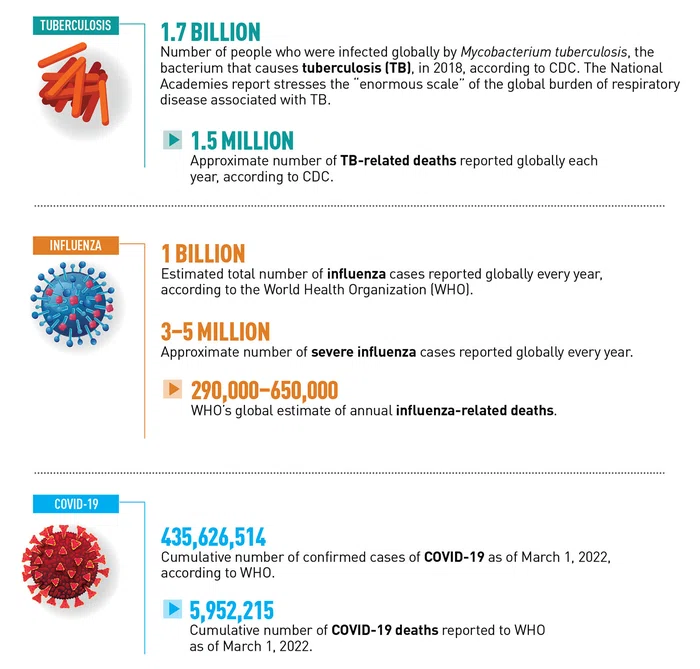

DEPARTMENTS
BY THE NUMBERS
Airborne Transmissible Biological Agents
A report released in February by the National Academies of Sciences, Engineering, and Medicine calls for extending respiratory protection to the public and to workers not currently covered by relevant OSHA requirements. Part of the report discusses inhalation hazards and their contribution to the global burden of disease. Rather than reviewing well-characterized workplace inhalation hazards like silica, the National Academies committee that developed the report focused instead on ambient air pollution, wildfire smoke, and biological, chemical, and radioactive agents associated with incidents such as public health emergencies.
Information from and related to the report regarding the burden of respiratory disease due to airborne transmissible biological agents appears below. Read more about the National Academies report in NewsWatch.
From “Frameworks for Protecting Workers and the Public from Inhalation Hazards”:
“Whether an infectious agent is communicable via the inhalational route and the mode of its transmission have implications for the selection of respiratory protection and where and when it is used. For example, surgical masks can be effective against larger-sized droplets by acting as a physical barrier and preventing these particles from reaching the respiratory tract. By contrast, smaller-sized aerosols have a greater propensity to follow airflows, thus requiring a respiratory protective device with a tighter seal to protect the airways and a better filtering capacity than what a surgical mask can provide to ensure proper protection.”
Tap on the graphic to open a larger version in your browser.

SOURCES
CDC: “Scientific Brief: SARS-CoV-2 Transmission” (May 2021).
CDC: “Tuberculosis.”
National Academies of Sciences, Engineering, and Medicine: “Frameworks for Protecting Workers and the Public from Inhalation Hazards” (2022).
World Health Organization: “WHO Coronavirus (COVID-19) Dashboard.”
World Health Organization: “WHO Launches New Global Influenza Strategy” (2019).